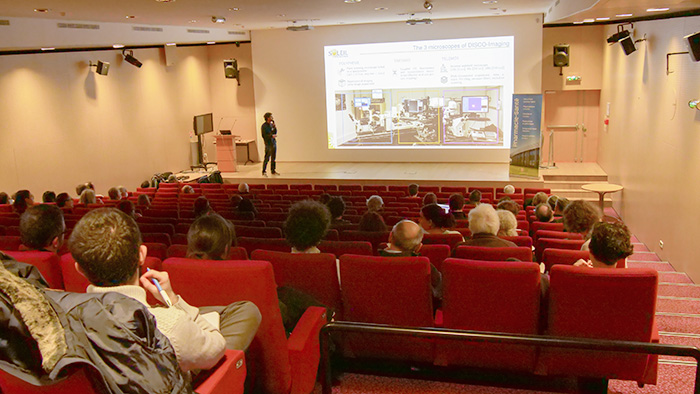On February 1st, 2023, the Health & Well-Being scientific section of SOLEIL organised a day of presentations and discussions for biologists from the plateau de Saclay area, at the Institute for Integrative Biology of the Cell (I2BC, Gif sur Yvette). Let’s take a look back at that day.
This event was initiated through the LivingMachines@Work (LM@W) network of which SOLEIL is a member. LM@W is an interdisciplinary scientific research and training programme involving communities of biologists, computer scientists, mathematicians, physicists, chemists and statisticians. By bringing together a community of more than 110 research teams, it aims to address two priority societal challenges of the University of Paris-Saclay: "Health and well-being" and "Energy, climate, environment, sustainable development".
The day began with a presentation of SOLEIL given by Jean Susini, the scientific director for life sciences, introducing the "Health and Well-Being" scientific section and the future opportunities offered by the SOLEIL upgrade. The members of the section then presented the 8 beamlines that constitute the "Health and Well-Being" section, split into two categories: imaging/spectroscopy beamlines and structural biology beamlines.

Hugo Chauvet, scientist at DISCO beamline, presenting the beamline.
According to Christophe Le Clainche, responsible of the LM@W network, the presentations impressed the participants, who realised that the opportunities offered by SOLEIL for their research were much greater than they thought.
The afternoon was dedicated to a presentation of the perspectives of the "Health and Well-Being" section, followed by a "speed dating" session which allowed participants to discuss specifically about their research projects challenges with SOLEIL scientists.

Afternoon of scientific speed dating.
The day ended with a presentation of the user access modes to SOLEIL and a discussion on their evolutions, to adapt to current science developments.
The innovative "speed dating" session was a great success, generating a lot of exchanges and enthusiasm, especially from participants not familiar with the synchrotron. The availability of flyers that describe every technique, while recapitulating the morning’s presentations, was also greatly appreciated.
Encouraged by the first enthusiastic feedbacks from the participants, the members of the "Health and Well-Being" section wish to repeat this experience in Paris (Institut Pasteur, Institut Curie, IPGP…), before planning future meetings and exchanges with scientific teams in the province.
